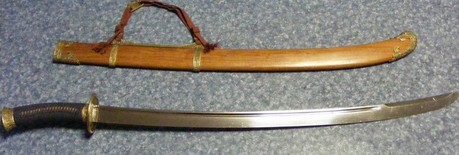Among the many types of Chinese broadsword, the Liu Ye Dao, or willow leaf sabre, stands out as my favourite. It handles well, moving quickly and with the ability to thrust, even though it is primarily a cutting sword.

The main characteristic that distinguishes the Liu Ye Dao from other Chinese sabers, is the shape of the blade. It curves moderately all the way along. Sometimes the curve is more pronounced towards the tip.
Most willow leaf sabres have a sharpened back edge for about a third of the blade length from the tip. Most of them have a canted hilt, although some were straight. There are variations in blade width and also in the taper of the blade.
Some have the same thickness almost to the tip and others gradually taper towards the point.
Philip Tom is the foremost expert on classification and culture of Chinese sabres. His name comes up everywher in the research I did to put this sword into simple terms for the Chinese Swords Guide. Scott Rodell's name comes up as well.
Some Liu Ye Dao had angular, squared hilts and pommel fittings. The round ones became more popular in the later Qing. During the Ming and Qing dynasties of China, the willow leaf sabre was used for the cavalry, and then also for the infantry. They became the martial arts sabre of choice in the Qing, as well. This has changed, although I don't know why. They are easier to handle than the oxtail sabres now used in many Chinese broadsword forms.
 English
English Japanese
Japanese Korean
Korean French
French German
German Spanish
Spanish Italian
Italian Arab
Arab Portuguese
Portuguese Vietnamese
Vietnamese Russian
Russian Finnish
Finnish Thai
Thai dk
dk